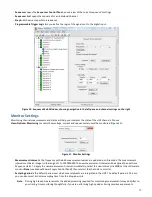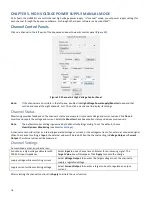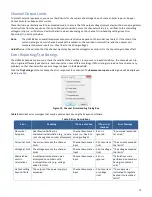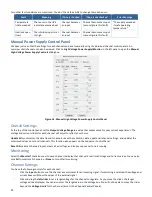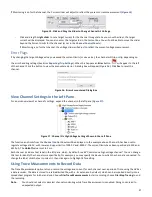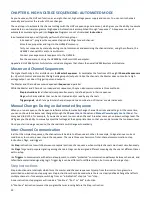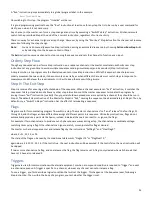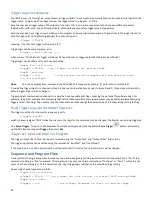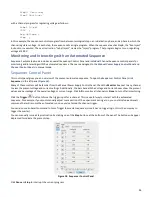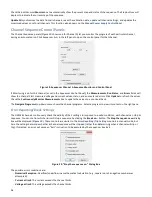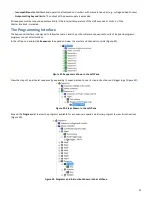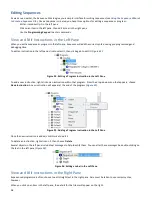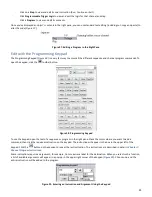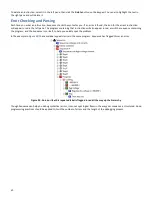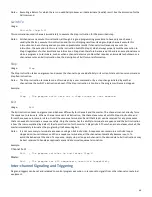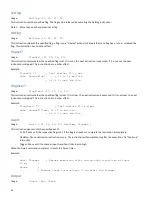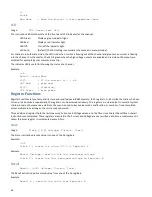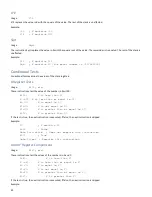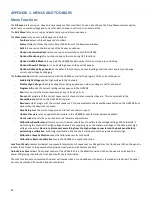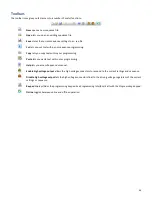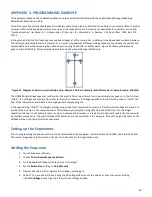
31
CHAPTER 7. CHANNEL PROGRAM INSTRUCTIONS
HVS448 programming is relatively easy to learn: there are only about 40 instructions to understand. The following sections detail
the instructions that are used in the Master and Channel Sequencers, which are referred to as “channels” for brevity. The
functions are listed as they appear on the Programming Keypad (see
Edit with the Programming Keypad
). The programming
language can be bypassed by using the
Simple Sequence Wizard
and
Complex Sequence Wizard
as described in
Chapter 2.
Getting Started.
An example of a sequence written in the Simple Sequence Wizard is given in
Appendix 1. Menus and Toolbars
.
Nomenclature
Square brackets ( [ ] ) indicate a required argument. Curly brackets({}) contain comma (,) separated lists and/or dash (–)
separated ranges of allowable arguments. The brackets, commas, and dashes should not appear in the instruction, for example,
Store [{A–M, Voltage, Current, Time}]
means that Store A, Store B,…Store M, Store Voltage, Store Current and Store Time are the allowable Store statements.
Execution Controls
Execution control instructions suspend program execution or jump execution elsewhere in the program.
Label
Usage:
Label [unique case-sensitive program label]
The label instruction is used to name a program or code segment. These names are used by the program commands Goto and
Call, and the Step instruction Run. The instruction has no further effect.
Syntax: Program labels can start with and contain any character except white-space characters and semicolons (;). There is no
restriction on length.
Notes:
Global Labels
All program labels that start with a capital letter are globally known by all programs of the particular
channel. No two global labels can be the same for any of the programs of a channel.
Local Labels
Program labels that start with a lower-case letter are local to the particular program. Local labels
allow a programmer to use simple labels like ‘a’ and ‘loop’ without worrying that the same names are used in
routines in other program listings. A local label cannot be repeated within the same for a program listing.
Example:
Label Inject
; Defines a global program label “Inject”
Goto
Usage:
Goto [unique case-sensitive program label]
The Goto instruction causes the program to “jump” to the labeled program or code segment. It has no other effect.
Syntax: The label must have a valid syntax and be recognized. See the instructions for
Label
(above) for more information.
Example:
Goto Inject
; Jumps to the global program label “Inject”
Call
Usage:
Call [unique case-sensitive program label]
The Call instruction causes the program to “jump” to the labeled program or subprogram. Unlike Goto, the program or
subprogram can resume executing from the instruction immediately after the Call instruction, by means of the Return
instruction. Call is generally used instead of Goto to execute subroutines or subprograms.
Syntax: The label must have a valid syntax and be recognized. See the instructions for
Label
(above) for more information.
Notes: When the Call instruction is executed, the current program position is added to a 16-level stack. When the
Return instruction is executed, this position is popped from the stack and the program resumes from the instruction
after that point. A subroutine, therefore, can call another subroutine, which can call another, etc., up to 16-calls deep. If

